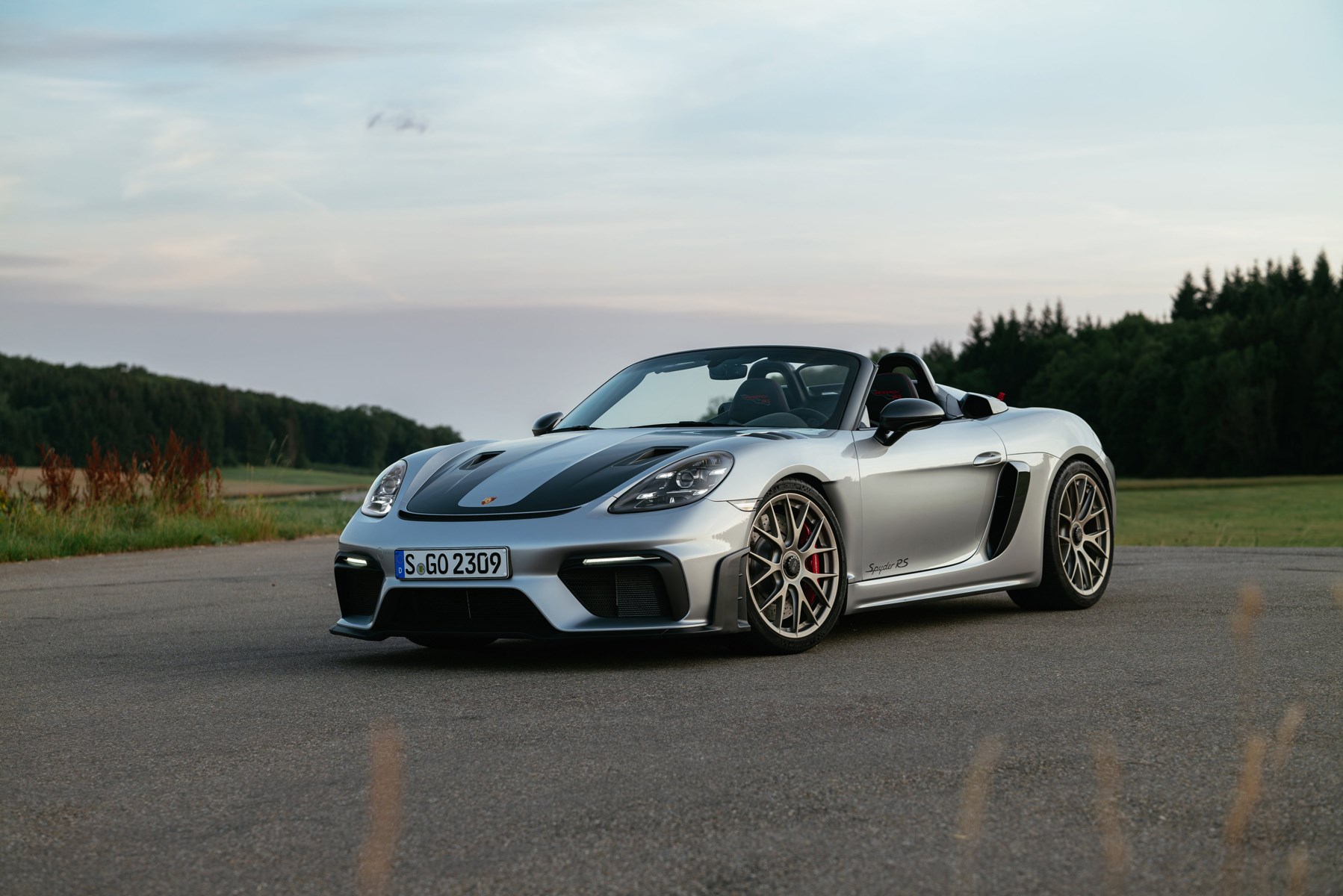► We drive fastest Cayman yet
► 493bhp flat-six from 911 GT3
► Watch the 718 Spyder RS video review, here
Unless you’re using a carbon tub, there’s very few occasions when the convertible version of a car is better than the coupe. But this might just be one of them. That’s because the Porsche 718 Spyder RS is, essentially, a drop-top version of the sublime but staggeringly stiff 718 Cayman GT4 RS – a car we like a lot, but one whose firm damping makes it feel compromised on UK roads.
At £123,000 the 718 Spyder RS costs exactly the same as the Cayman GT4 RS, but it does two key things differently. The first is give you the opportunity to live the open-top dream in a Porsche RS model (when was the last time that happened?) and the second, is that its spring rates are considerably softer than its coupe equivalent.
How much softer are the springs?
Quite a bit – 55% at the front and 43% at the rear over the Cayman GT4 RS, plus the damper tune has been revised accordingly. Trying to tell the difference on marble-smooth German roads was challenging, but on the bumps and expansion joints that slipped through the net the Spyder RS does feel appreciably softer.
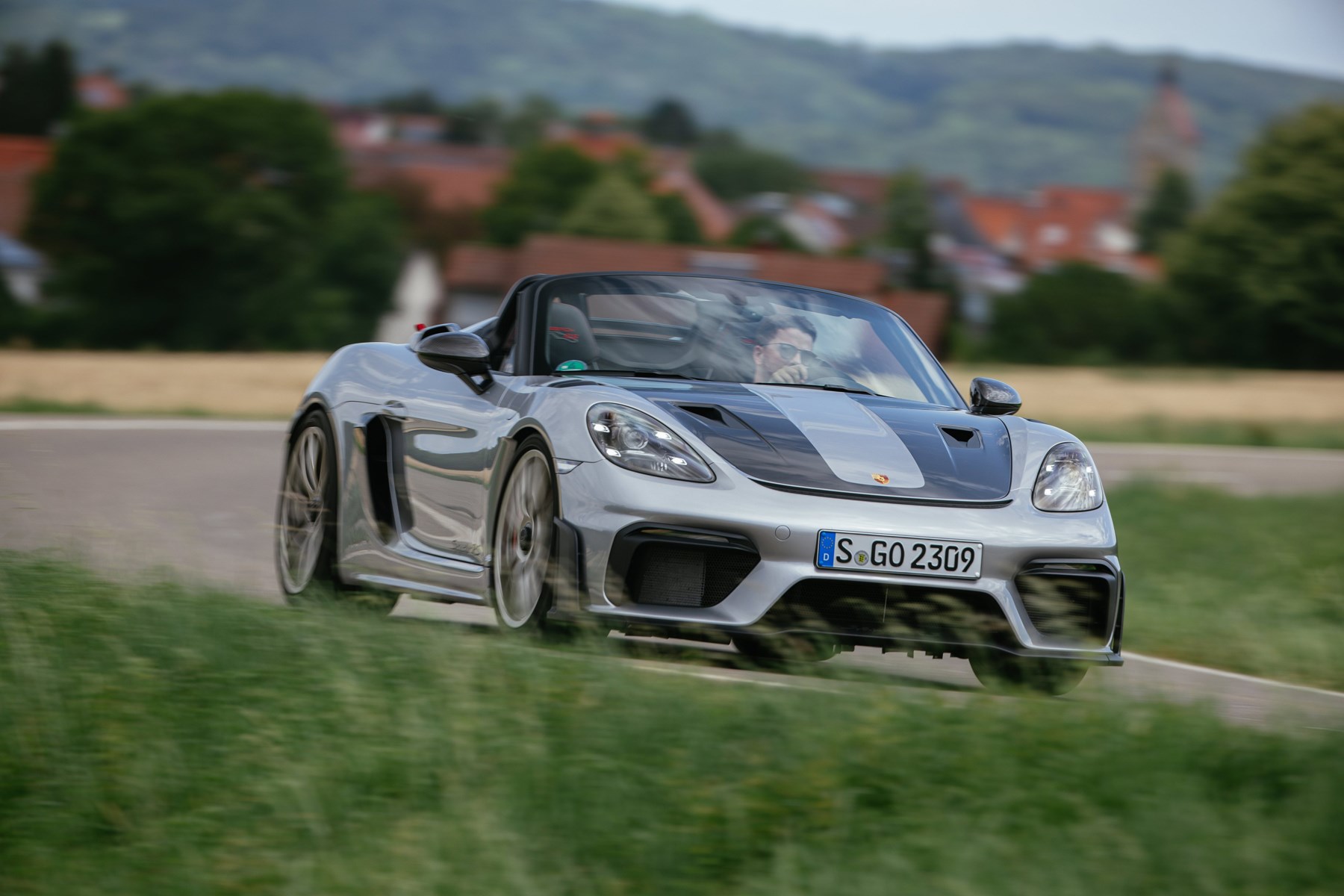
The rear axle has less tendency to bounce over a quick succession of bumps and the whole car feels like it’s better able to keep all four tyres in contact with an imperfect road surface. As you’d expect, the ride quality is also improved as a result and help make the Spyder RS a passable cruiser. The flipside to this improved compliancy is that the chassis isn’t quite as razor sharp as the Cayman GT4 RS, but the difference – especially on road – is incredibly subtle.
Side note, there’s still a slightly disappointing lack of feel and positivity off straight-ahead position from the Spyder RS’ steering – same as in the Cayman GT4 RS. The front axle is very similar to that of the 991.2 911 GT3 RS and, compared with the upgraded double-wishbone setup we’re getting used to on modern GT3/GT3 RS models, it is starting to feel a touch vague. That said, things such as ride height, camber and anti-roll bars are all adjustable just like on the Cayman GT4 RS.
What’s the weight difference to the GT4 RS?
Again, unless a carbon tub is involved, the convertible version is almost always heavier than the coupe. That’s because additional strengthening needs to be put in place to make up for the loss of structural integrity caused by removing the fixed roof.
However, as the 718 model line is built from the ground up to be a roadster, removing the roof is of little consequence to the car’s stiffness. As a result, the 718 Spyder RS is only marginally less rigid than the Cayman GT4 RS, but – at 1,410kg – it is 5kg lighter thanks to its 18.3kg roof. For context, that kerb weight is 40kg less than the 718 Spyder with the PDK gearbox. Impressive.
What’s the roof like?
There’s two ways of looking at this. On the one hand, it’s a faff that takes at least 1.5 minutes (if you’re very well drilled) to put up or down and is nowhere near as convenient as a regular Boxster drop-top.
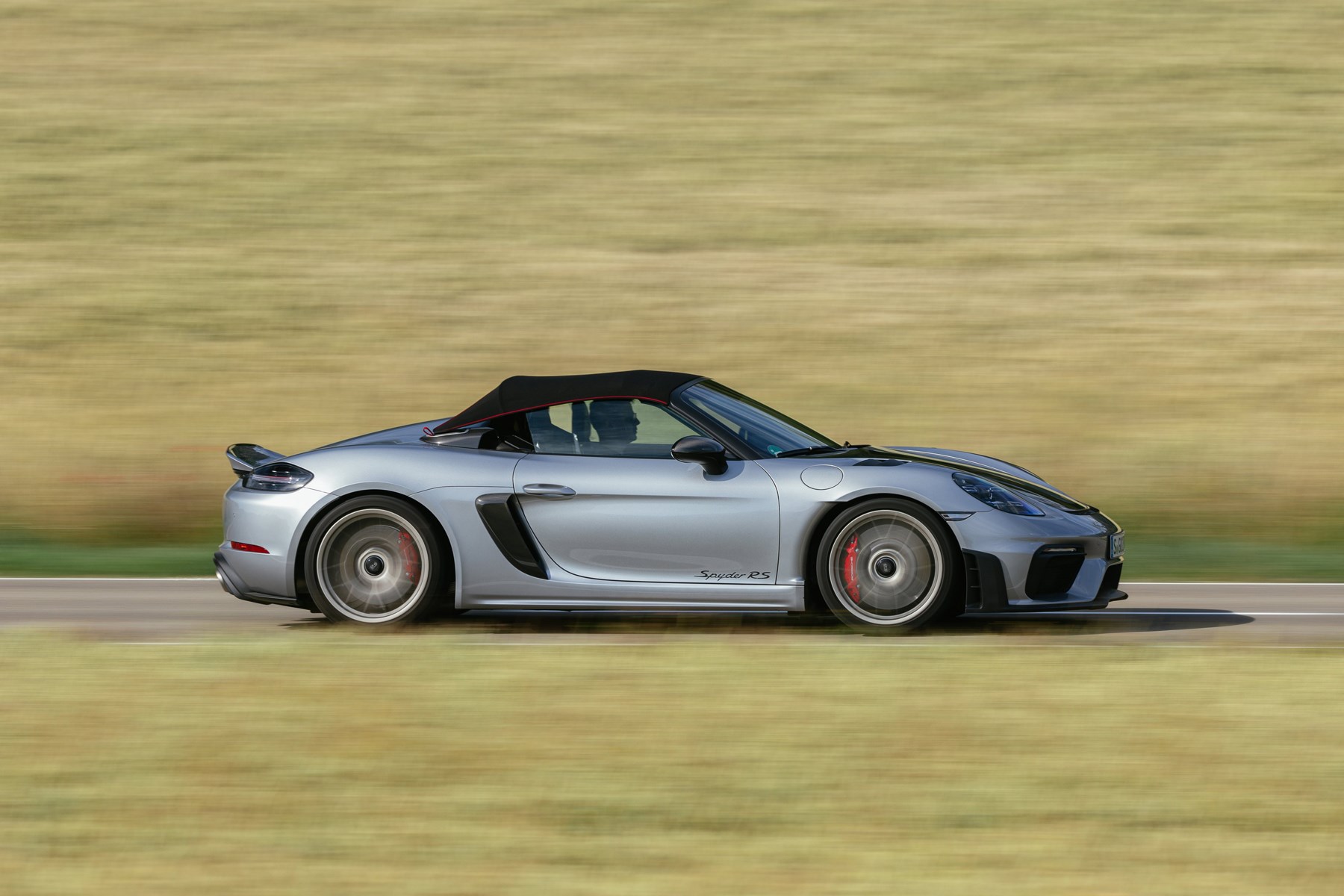
However, on the other it’s technically very impressive (the actual design is cleverly thought out) and allows you to experience a Porsche RS model sans roof. And since this is the last Boxster with a petrol engine, part of the appeal – the sound – may well be about to disappear for good.
What does it sound like with the roof down?
For those who’ve experienced the Cayman GT4 RS drive by, the removable roof poses a significant question as, outside the car, the noise levels are very similar to a regular GT4. So how does chopping the roof off make any real difference? Well, Porsche’s engineers have clearly gone to some effort to redesign the area immediately behind the seats, meaning the air intakes (the things that make all the noise in the Cayman GT4 RS) have been repositioned and double up as part of the roof latching system.
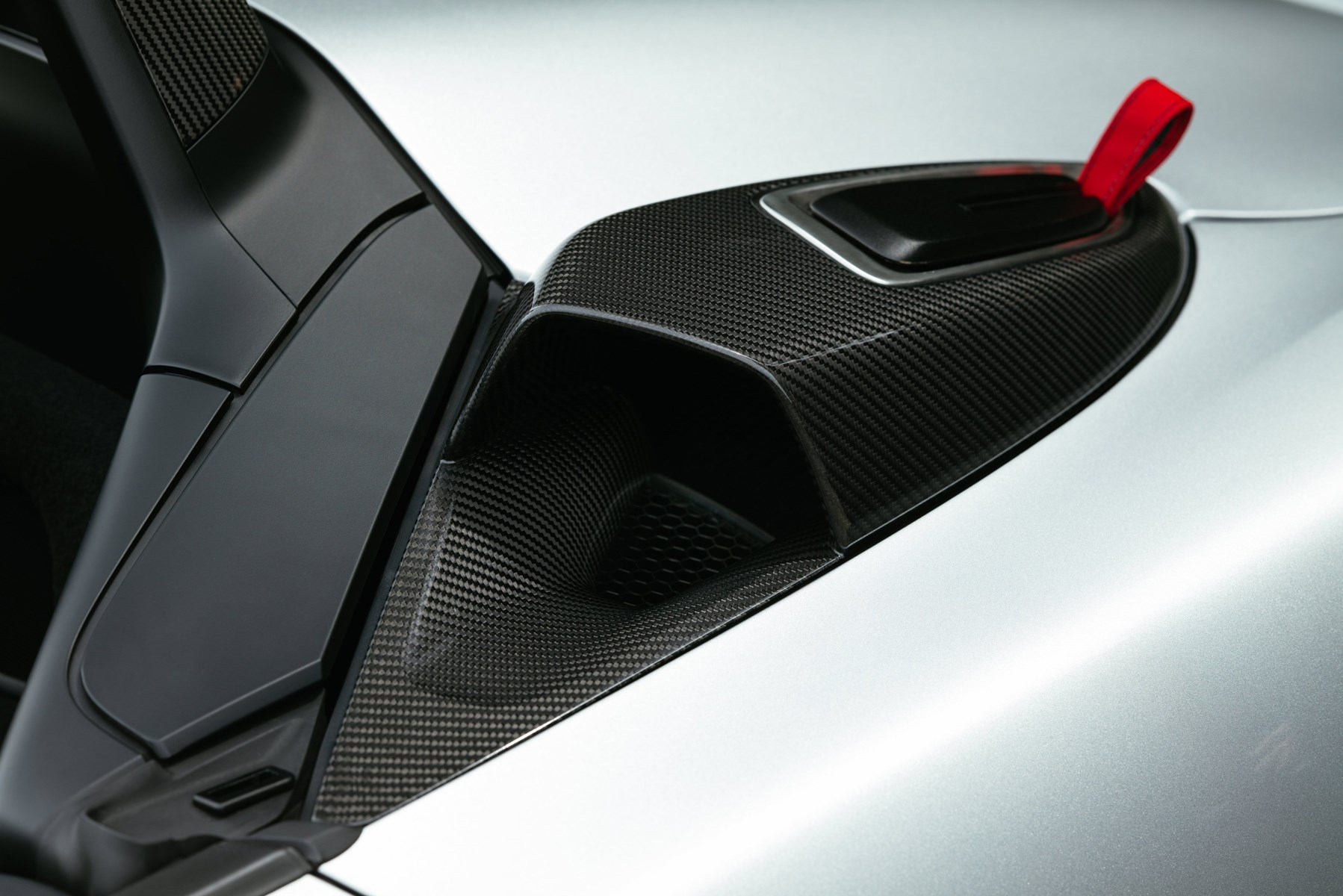
With the roof off, the sound is – arguably – even better than the Coupe as the cabin acts less like an echo chamber that distorts the purity. It’s like listening to the car drive past you at full chat, but you’re constantly moving with the car… if that makes sense. For us, it doesn’t sound quite as musical as the 911 GT3/GT3 RS, but it’s bombastic performance nonetheless and one that’s offensively loud should you put the sun sail on but keep the weather deflector off.
So the engine is still good?
Mesmerisingly so. Taking a 4.0-litre Porsche 911 GT3 engine and putting it in a much smaller sports car is always going to be a recipe for thrills, but whipping the roof off only adds to the experience. It’s fast, sure, 493bhp, 332lb ft torque, 0-62mph takes just 3.4 seconds and top speed is 191mph with the roof down (much less with the roof up). But – like most Porsche GT products – the straight-line stats aren’t the main event.
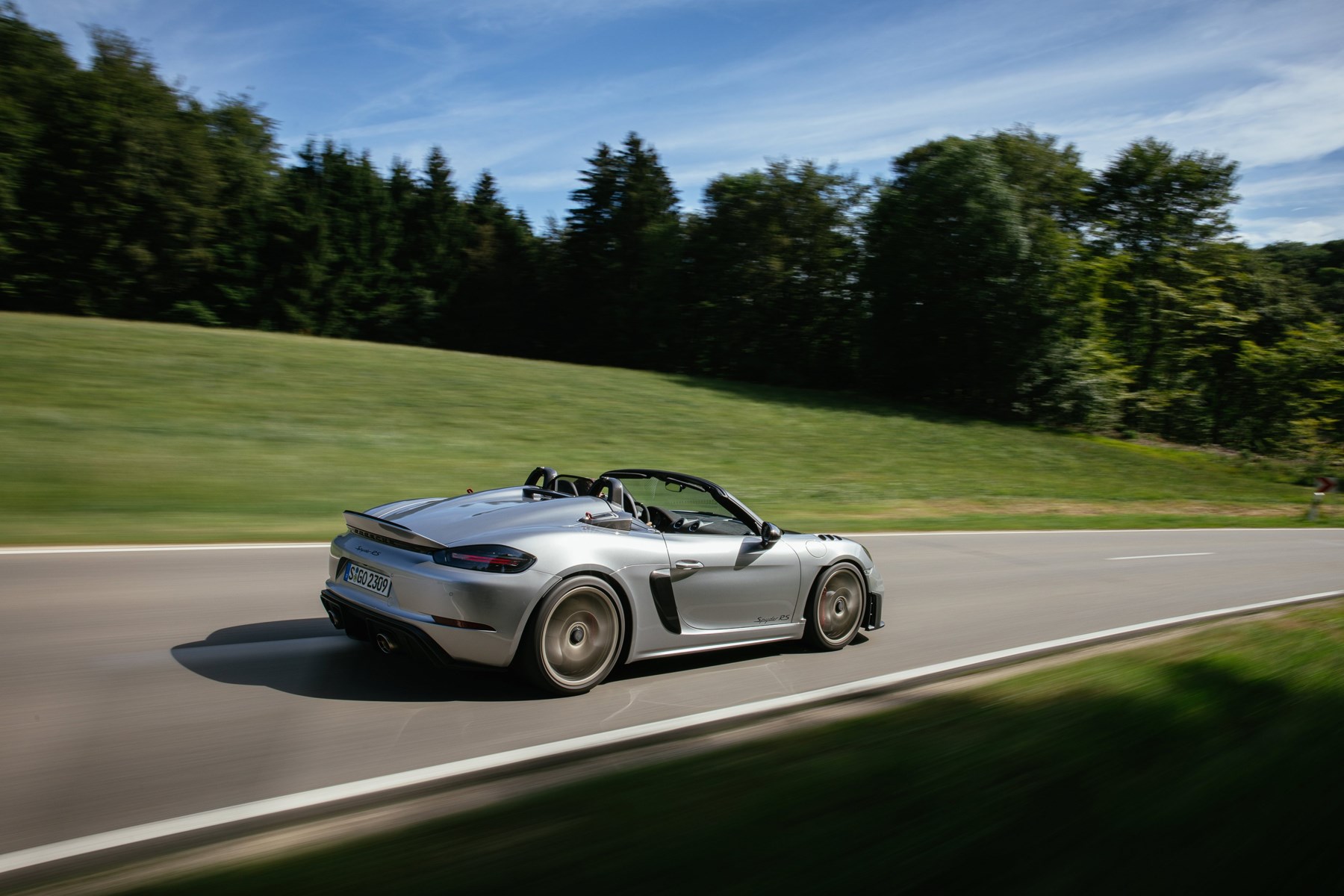
We’ve already discussed the incredible sound, but the responses are just as impressive. Accelerating in 2nd or 3rd gear while in the power band is utterly ferocious and totally addictive. Turbo’d cars will pull harder, but the crispness of the Spyder RS’ responses are something to behold. What’s more, the seven-speed PDK gearbox is possibly the finest double-clutch unit on sale today, such is the speed and precision of the gearchanges and blips. In fact, it feels even better than the transmission used on the 911 GT3 RS.
Anything else?
It’s worth highlighting that the entire front end of the Spyder RS is almost identical to the Cayman GT4 RS. So that means dual NACA air ducts, sideblades, vents on the wheel arch – the lot… The only real change is that the front lip is slightly smaller, this done to ensure the aerodynamics are still balanced given the swan-neck rear spoiler has been removed.
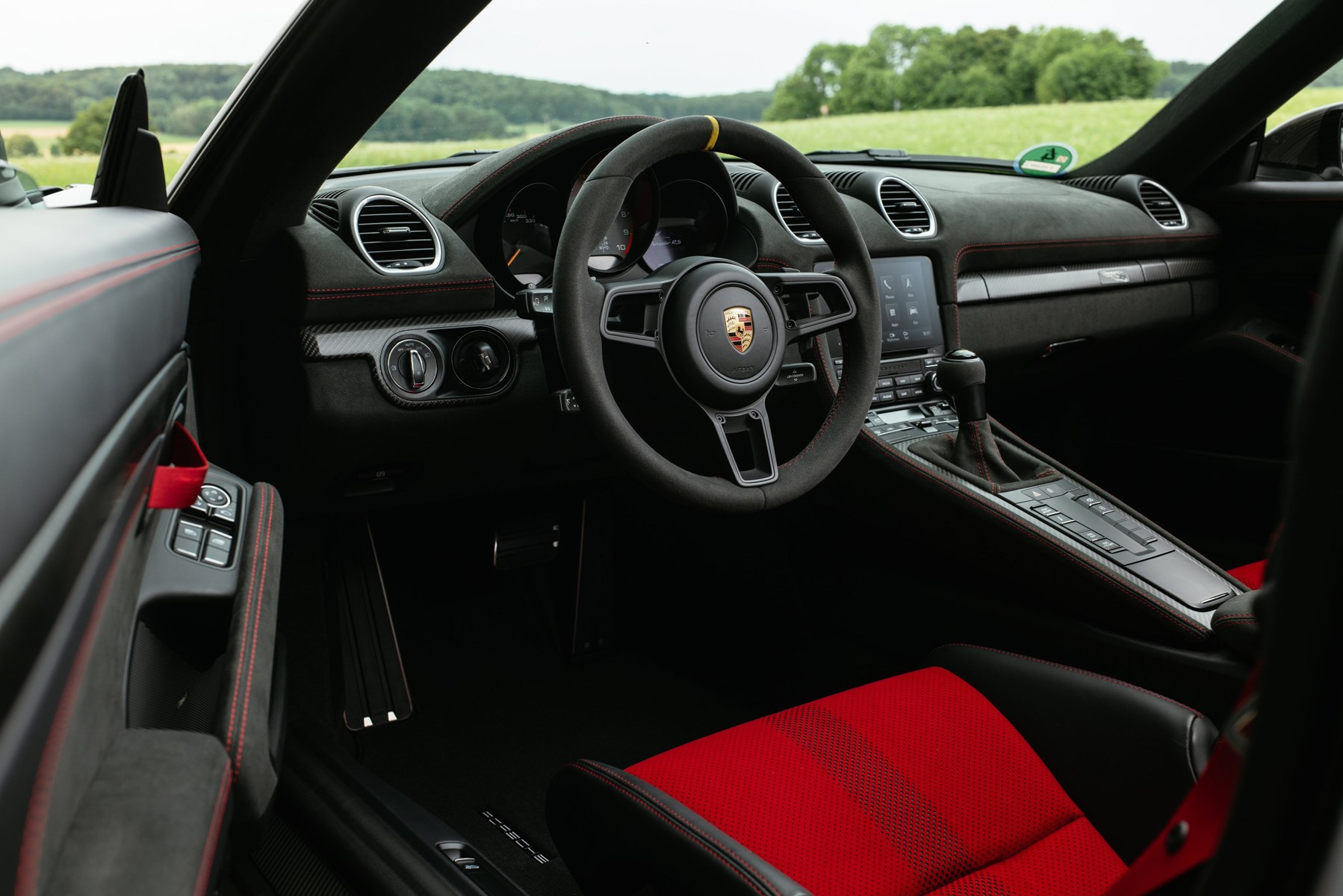
That’s right, the trademark RS model wing doesn’t make it to the Spyder version, with Porsche pointing out that while maximum downforce may have been the priority on the Cayman GT4 RS, stable aero is the name of the game on the roadster. That means a more subtle ducktail spoiler takes its place behind the double-bubble rear clamshell.
Final word goes to the 718 Spyder RS’ cabin which is surely the last of the old-school Porsche interior. Its analogue dials and healthy collection of buttons are a reminder of where modern cabin design is going wrong. It treads the fine line between offering just enough functionality to make the car civilised, but not being too clever as to distract anyone from the main event.
Verdict
It’s at this point of the review where we’d usually try and compare the car in question to a rival or similarly priced alternative. But, in truth, there aren’t any drop-top sports cars that offer this level of focus, thrills, speed, build quality and usability for the money being asked. It really is a thrill-a-minute pocket firework that sends off the petrol-powered Boxster in predictably sensational style.
A question more pertinent, then, would be whether you should buy this or the identically priced Cayman GT4 RS. If you’ll spend most of your time on track, there’s only one answer, but otherwise – and as long as you don’t mind a bit of roof assembling from time to time – the 718 Spyder RS is the altogether more enjoyable car.
